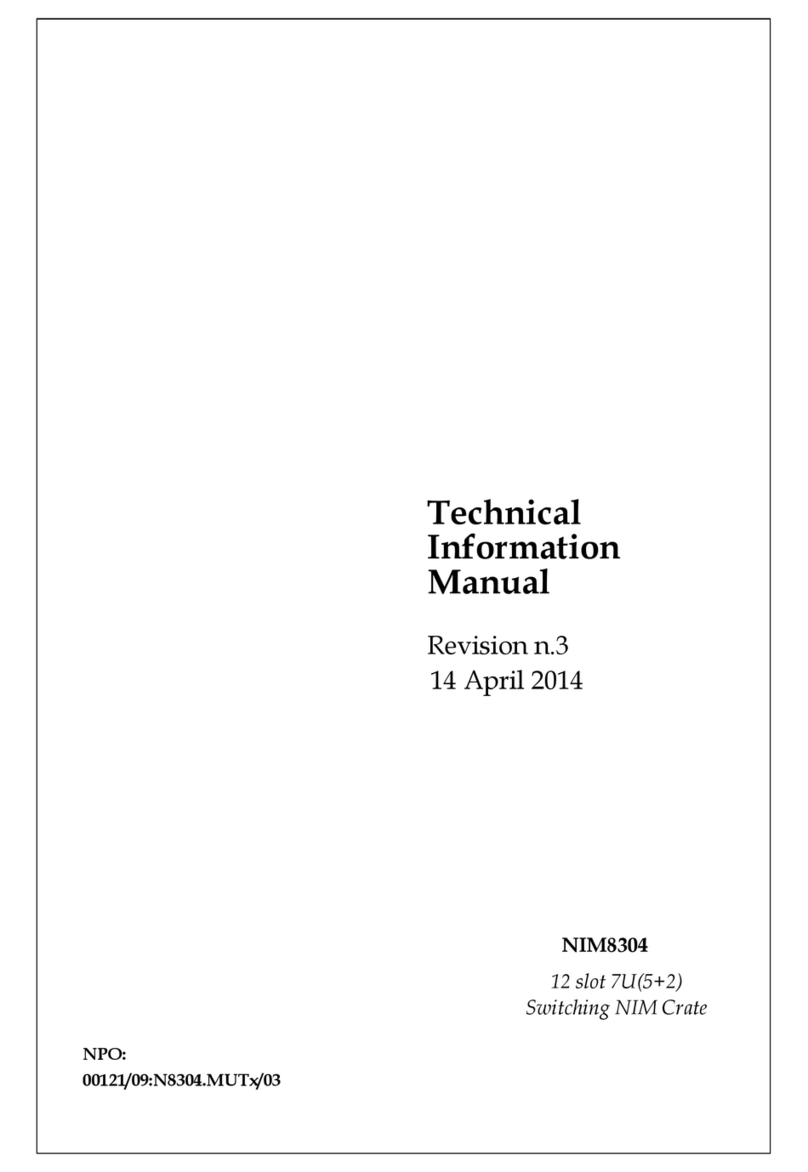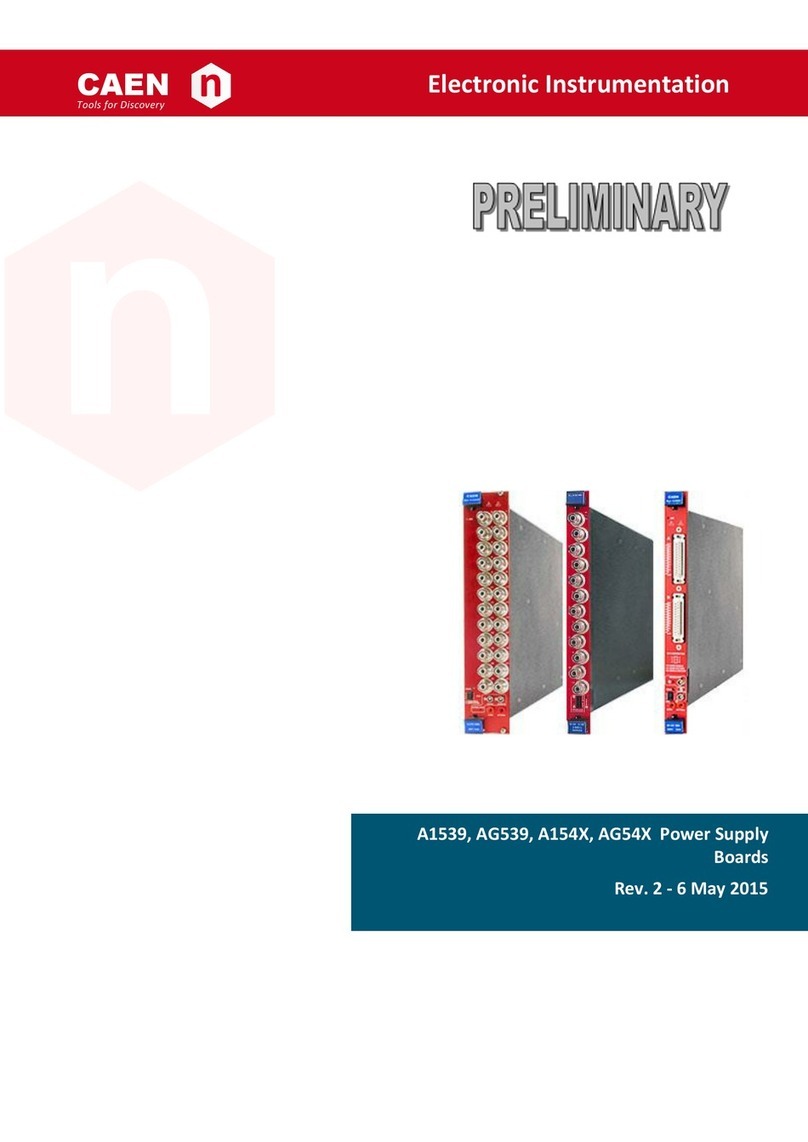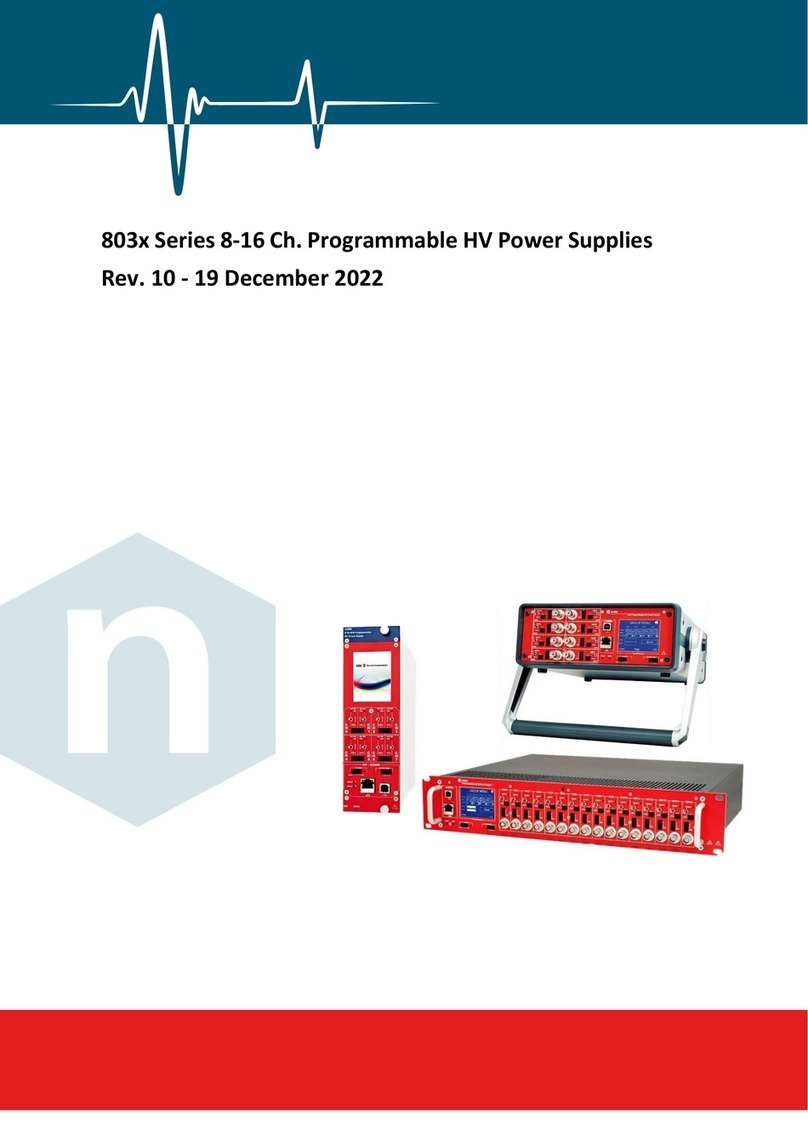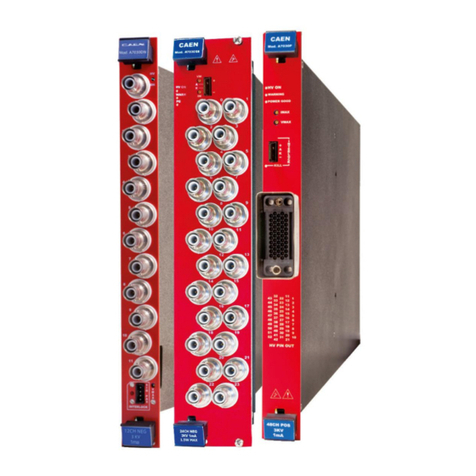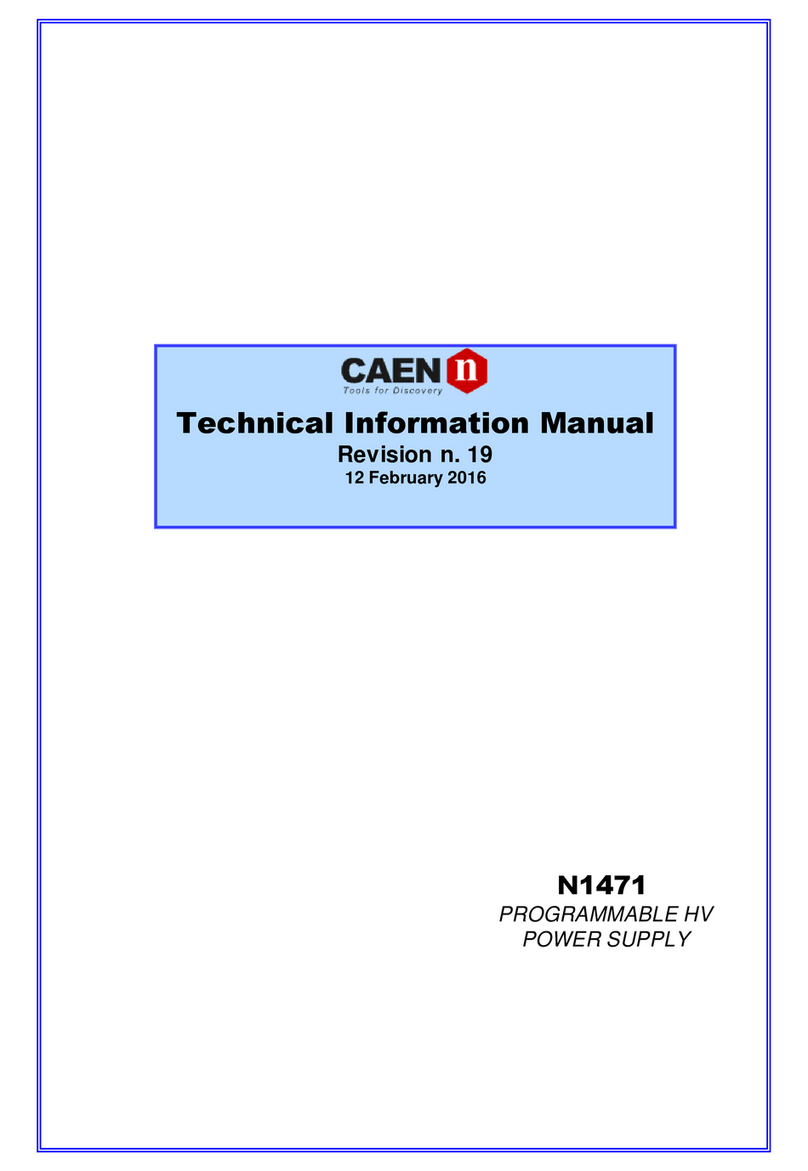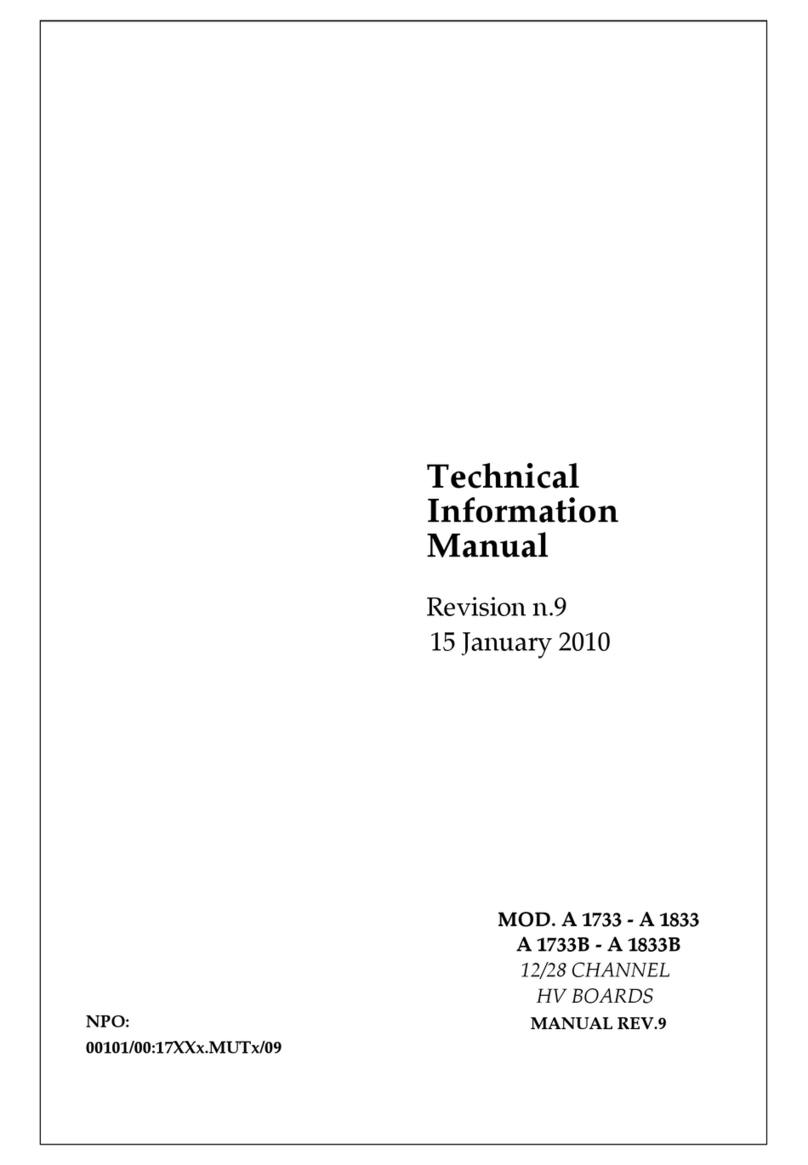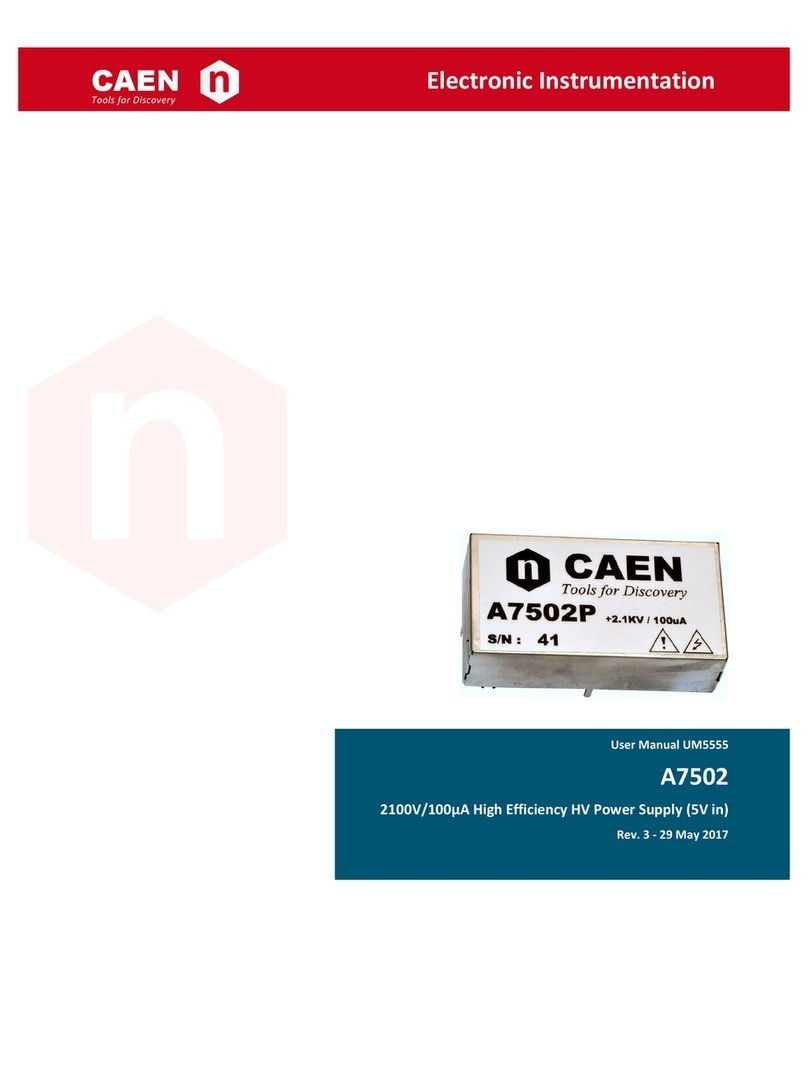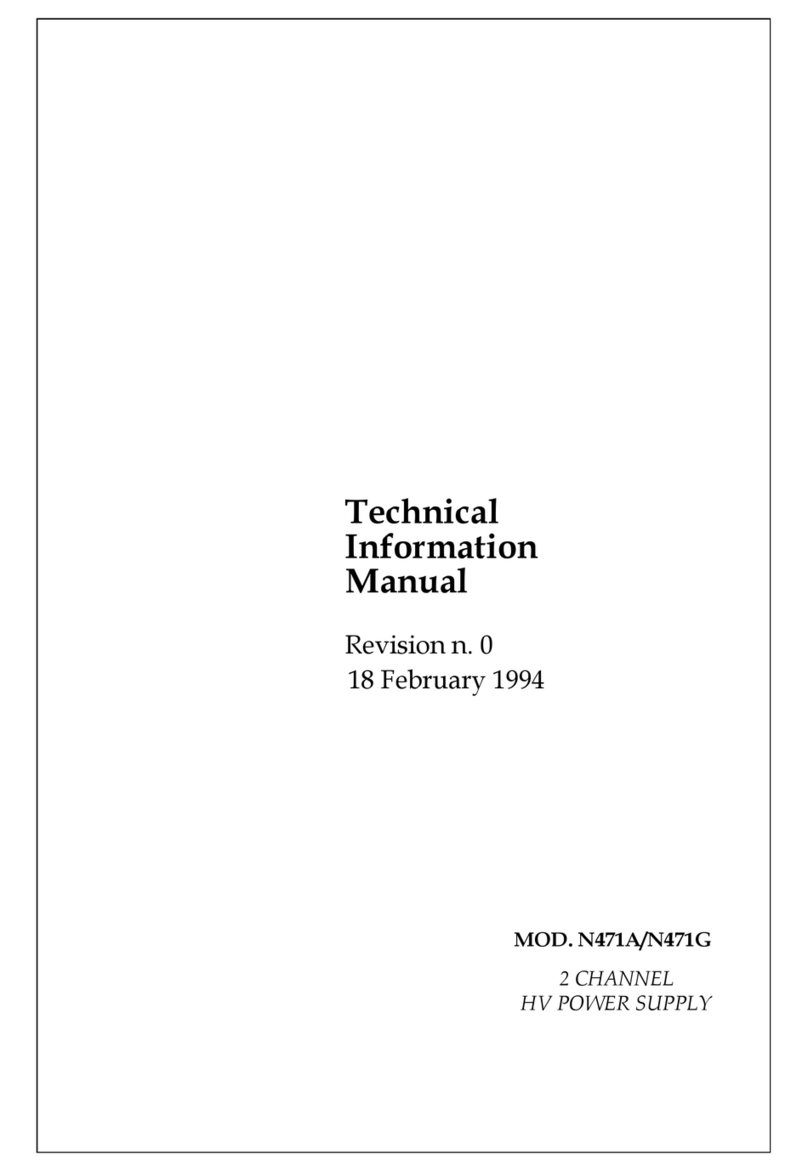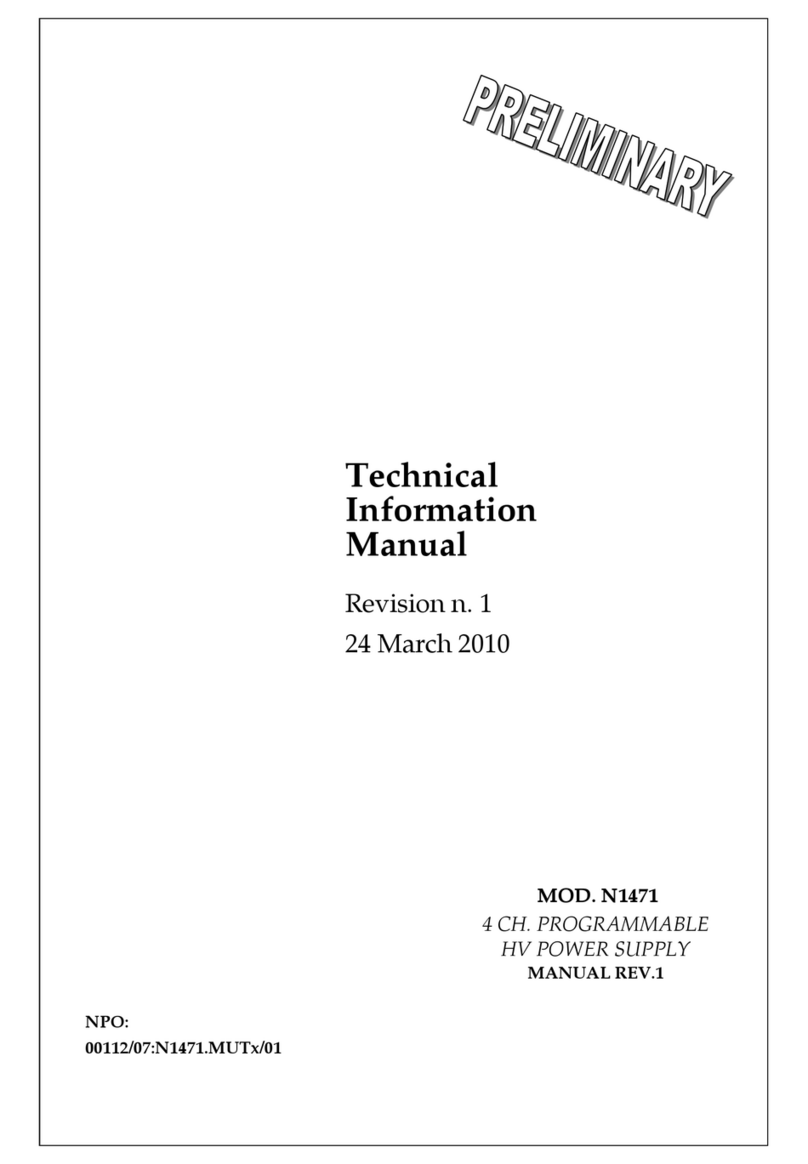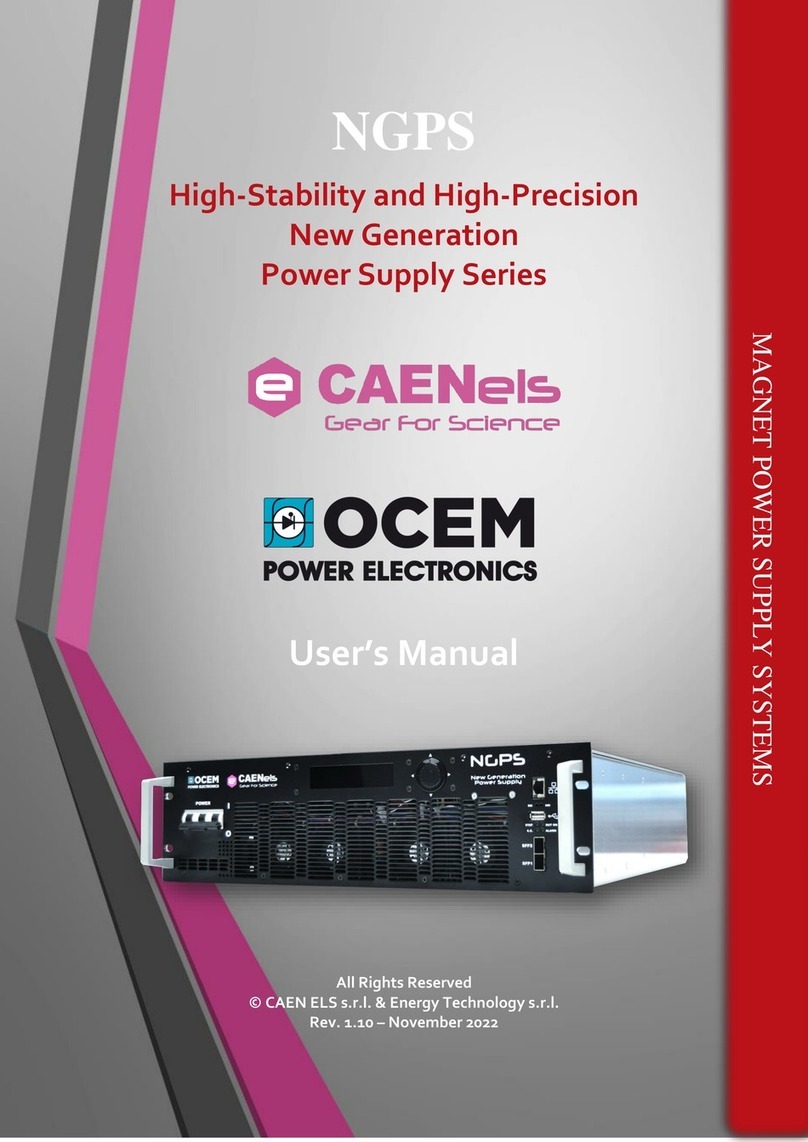Document type: Title: Revision date: Revision:
Installation Guide (MUT) Mod. SY1527, universal multichannel power supply system 03/12/02 3
NPO: Filename: Number of pages: Page:
00103/97:1527x.MUTx/03 HWGUIDE_REV3.DOC 62 10
The User interface features the usual friendliness of the previous CAEN systems which
now also includes a 7.7" colour LCD. A wide choice of communication interfaces
provides full compatibility with the previous systems and the possibility of controlling
heterogeneous external devices.
Modularity has been one of the leading criteria in the system design and development:
both the Power Supply Section and the Board Section are completely modular. The
Power Supply Section allows different configurations with up to 3 power supply units per
mainframe (up to 2250 W), while the Board Section can house up to 16 boards able to
fulfil different functions. A new line of boards and distributors, analogous with those
available for the SY527 system and a set of branch controllers has been specially
developed for this new system. The minimum system configuration consists of the
primary power supply, one Power Supply Unit and one board.
The concept of modularity has been extended up to the possibility of arranging ‘clusters’
constituted by one ‘intelligent’ SY1527 system able to drive other ‘non-intelligent’
systems, i.e. systems without CPU (to be implemented). The connections among the
systems constituting the cluster are realised through a new CAEN interface, the Local
Net.
The extreme system flexibility, which allows to house indifferently, inside the same
mainframe, boards with different functions, is further enhanced by the possibility of
developing ad-hoc boards and even complete custom peripheral systems. The latter,
actually, can be designed specifically for on-detector installation. All the custom
electronics can be however remotely controlled by single boards which are inserted in
the SY1527 mainframe and act as branch controllers.
Fast, accurate set-up and monitoring of system parameters (14-bit resolution on Voltages
and Currents with standard boards) is available for each branch controller thanks to the
use of one microprocessor per slot. All the operational parameters are stored in a non-
volatile memory (EEPROM) to be still available after Power-Off. The parameters can be
controlled either via CAEN traditional built-in links (RS232, H.S. CAENET) or via CERN-
approved Fieldbuses or via Ethernet (TCP/IP). Programmable handling of parameters
and errors is available as well.
Channel trip control on other crates is performed via four external differential trip lines. A
sophisticated trip handling software allows to control and correlate trip conditions on the
channels of the crate as well as of other crates connected to it.
Easy access to the computing core and peripherals and live insertion and extraction of
the boards, which reduces the global down time, completes the system flexibility.
Easy interfacing is another key-point of the SY1527 system. Thanks to the H.S. CAENET
interface, the system ensures full communication compatibility with the previous models.
Besides the RS232 interface and Ethernet (TCP/IP) provided with the standard version of
the system, CAN-bus can be furnished on request, as well as special boards featuring
optical links for remote communications. The Power Supply Section and Board Section
can be externally synchronised via front panel connectors.
Secure access to the system via Intranet is foreseen together with a multilevel
management of custom User's profiles. In particular, three different access levels have
been implemented: Guest, User and Administrator, each of which with password
protection.
Handy maintenance and upgrading, which constitute a major issue in the reliability of a
system, are further guaranteed by the possibility of accessing and servicing the system
